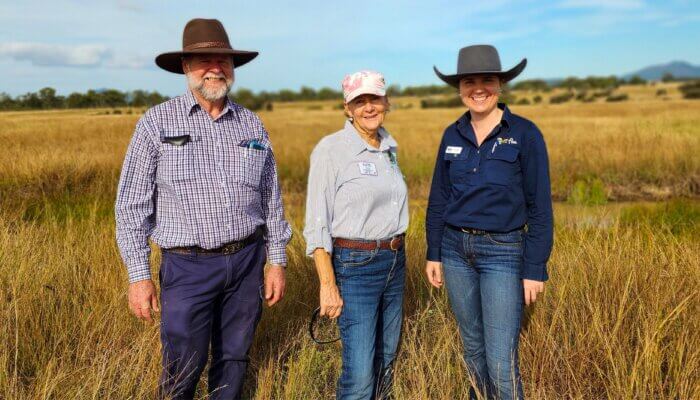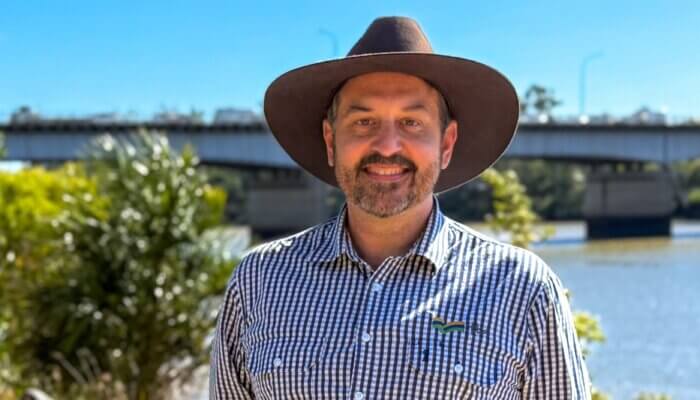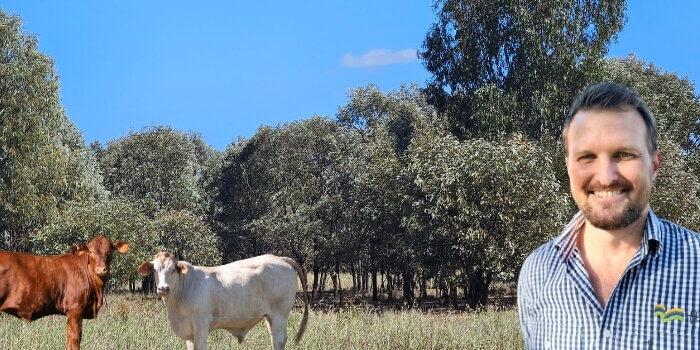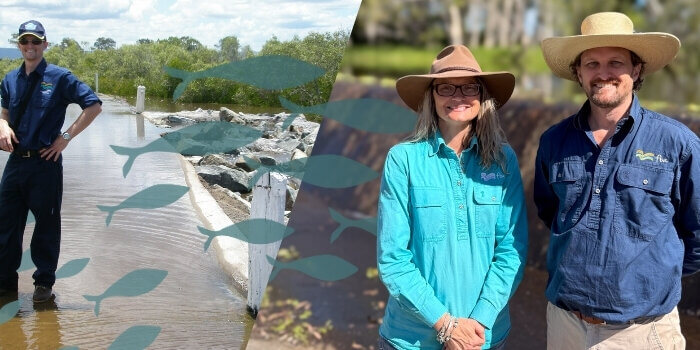
Major drought reform for Queensland producers
Posted on June 23rd, 2021
A major reform to Queensland’s drought assistance will help Queensland primary producers improve their management of future droughts. A range of proactive measures including tailored training, grants and loans will be open to primary producers without needing a drought declaration across a broad range of agricultural industries.
The new drought assistance will be available for application from late 2021 through the Queensland Rural and Industry Development Authority (QRIDA).
The Queensland Government’s Drought Relief Assistance Scheme (DRAS) will continue for this current drought. Drought-declared producers can continue accessing DRAS support or move to the new measures. DRAS will be phased out as local government areas come out of drought.
Keep an eye out for regional forums explaining the new drought assistance later this year. Some of the new drought assistance measures are jointly funded through the Australian Government’s Future Drought Fund.
For more information visit daf.qld.gov.au/drought or phone 13 25 23.
New measures
Skills training will be offered on drought and climate preparedness and other business risk management for primary producers.
A rebate of 50 per cent to a maximum of $2,500 will be available to primary producers for the professional cost of developing a farm business resilience plan for their property.
The Drought Preparedness Grant scheme will provide a rebate to primary producers of up to $50,000 for on-farm capital improvements identified in their Farm Business Resilience Plan to improve the drought preparedness and resilience of their property. Examples include drilling of a bore, installing water infrastructure, installing feed storage, expanding dams and improving irrigation.
The Drought Ready and Recovery Finance Loan provides a concessional interest loan of up to $250,000 for primary producers to undertake preparedness measures identified in their Farm Business Resilience Plan to improve the drought preparedness and resilience of their property. Examples include drilling of a bore, installing water infrastructure, installing feed storage, expanding dams and improving irrigation. This is a complementary measure to the drought preparedness grants.
The Emergency Drought Assistance Loans Scheme provides an interest-free concessional loan to drought-declared primary producers of up to $50,000 as emergency finance for carry-on activities like paying wages or creditors during drought.
The Drought Carry-on Finance Loans Scheme provides a concessional interest loan to drought-declared primary producers of up to $250,000 for drought carry-on finance. These loans will be available where the $50,000 available from the Emergency Drought Assistance Loans Scheme is insufficient.
Frequently asked questions
The new drought assistance will help Queensland primary producers better manage future droughts through new preparedness measures including tailored training, grants and loans.
Drought assistance has been broadened and is now open to all primary producers across all agricultural sectors to better manage future droughts without needing a drought declaration. The current Drought Relief Assistance Scheme (DRAS) is limited to grazing livestock producers.
The Queensland Rural and Industry Development Authority (QRIDA) defines a primary producer as follows to assess eligibility for assistance:
(a) a sole trader who spends the majority of the sole trader’s labour on, and derives the majority of the sole trader’s income from, a primary production enterprise; or
(b) for a partnership, company or trust that carries on a primary production enterprise—the partners in the partnership, shareholders in the company or beneficiaries of the trust who spend the majority of their labour on, and derive the majority of their income from, the primary production enterprise.
Producers can apply for assistance to develop farm resilience plans. Once a plan is completed, it enables access to grants and loans for activities to improve the drought preparedness of the business.
The measures that will be available in any year, regardless of drought status, include:
- Farm Business Resilience Program
Gives producers access to information and skills training to help determine their priorities in planning for future droughts and other business risks. This is co-funded through the Australian Government’s Future Drought Fund, and delivered by the Department of Agriculture and Fisheries.
The following measures will be delivered by QRIDA:
- Farm Management Grants Program
Provides a rebate of 50 per cent to a maximum of $2,500 to primary producers for the cost of accessing professional help to develop a Farm Business Resilience Plan for their property. - Drought preparedness grants scheme
Provides a rebate to primary producers of up to $50,000 for on-farm capital improvements identified in their Farm Business Resilience Plan to improve the drought preparedness of their property. The Drought Preparedness Grant is up to 25 per cent of the cost of the infrastructure to a maximum of $50,000 in a year or spread over a five-year period. - Drought Ready and Recovery Loan Scheme
Provides a concessional loan of up to $250,000 for primary producers to undertake preparedness measures identified in their Farm Business Resilience Plan to improve the drought preparedness of their property. The loan can be matched with a drought preparedness grant.
Drought-declared producers in future droughts will be able to access:
- Emergency Drought Assistance Loans Scheme
Provides an interest-free loan to primary producers of up to $50,000 as emergency finance for carry-on activities like paying wages or short-term creditors during drought. This will be delivered by QRIDA.
Only one Emergency Drought Assistance Loan per business can be held at a time.
- Drought Carry-on Finance Loan Scheme
Provides a concessional interest loan to primary producers of up to $250,000 for drought carry-on finance during drought. These loans will be available where the $50,000 available from the Emergency Drought Assistance Loans Scheme is insufficient to manage drought conditions. Only one Drought Carry-on Finance Loan per business can be held at a time.
The new drought programs’ guidelines are currently being developed in consultation with industry and will be launched second quarter 2021-2022.
Yes. The DRAS scheme will continue while this drought lasts. Producers who are currently drought-declared can still access existing drought assistance measures such as DRAS.
Once revoked from drought, DRAS freight subsidies for the movement of livestock back to a property (livestock purchased for restocking and livestock returning from agistment) will remain available for two years after a current drought declaration is revoked.
Yes. DRAS will be phased out as local government areas come out of drought. DRAS will not be available in future droughts.
Drought-declared producers can continue accessing DRAS fodder and water freight subsidies and the Emergency Water Infrastructure Rebate (EWIR) until their drought status is revoked.
DRAS freight subsidies for the movement of livestock back to a property (purchased livestock and livestock returning from agistment) will remain available for two years after a current drought declaration is revoked.
Drought-declared producers can choose to move to the new drought preparedness grants and loans, but will then lose access to DRAS. Producers cannot access both DRAS and the new measures at the same time. However, there is an exception—drought-declared producers can participate in the Farm Business Resilience Program and obtain a farm management grant for a farm business resilience plan while still accessing DRAS.
DRAS will not be available in future droughts.
Yes. Drought-declared producers can choose to move to the new drought preparedness grants and loans, but will then lose access to DRAS. Producers cannot access both DRAS and the new measures at the same time. However, there is an exception—drought-declared producers can participate in the Farm Business Resilience Program and obtain a farm management grant for a farm business resilience plan while still accessing DRAS.
No. The DRAS subsidies and rebates will not be available in future droughts. The new proactive assistance measures will be a replacement for DRAS. The Drought Preparedness Grant and the Drought Ready and Recovery Loan will be available in any year, and the new in-drought assistance, such as the emergency drought assistance loan and the drought carry on finance loans, will only be available in years where there is a drought declaration.
Other assistance measures, such as the Drought Relief from Electricity Charges Scheme, land rent rebates and water licence waivers, may be or may not be available in future droughts and the decision on these assistance measures will be made by the Government at the time.
Drought-declared producers can continue to access the Queensland DRAS freight subsidies while this drought lasts.
DRAS freight subsidies in future droughts will be replaced by the zero interest Emergency Drought Assistance Loan Scheme and the concessional interest Drought Carry-on Finance Scheme. The two concessional loan schemes will be available to all eligible drought-declared primary producers while DRAS freight subsidies are only available for primary producers with grazing livestock. The concessional loans will help producers fund a wider range of activities than freight to keep their business in operation during drought.
Drought-declared producers can continue to access the Queensland EWIR while this drought lasts, and the Federal On-Farm EWIR until June 2022 or earlier if its funding allocation is exhausted. The Queensland EWIR will be replaced by the Drought Preparedness Grant which does not require a drought declaration and can be accessed in any year. The Drought Preparedness Grant can still be used for water infrastructure aimed at improving drought resilience. However, it will be available for a broader range of drought preparedness infrastructure than the EWIR.
For more information, visit daf.qld.gov.au/drought or phone the Customer Service Centre on
13 25 23.









